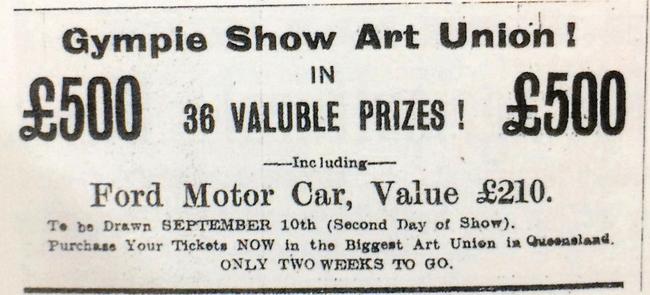The Gympie District Show: a brief history
The Gympie Show has seen many changes through its years and we take a look at its place in history
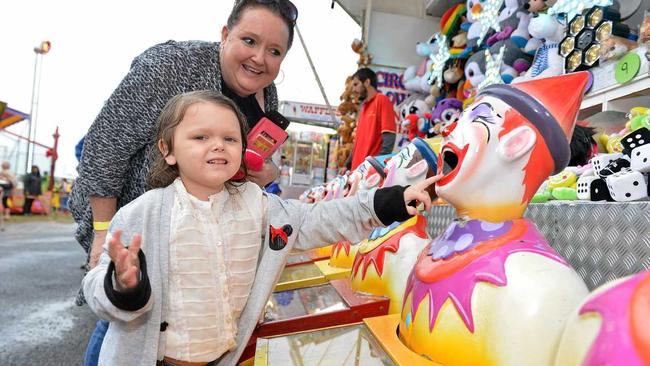
Gympie
Don't miss out on the headlines from Gympie. Followed categories will be added to My News.
OCTOBER 16, 1877, the debut for the Gympie Agricultural, Mining and Pastoral Society Exhibition, now known at The Gympie Show.
The day picked for the 10th anniversary of James Nash's discovery of gold.
It was the same year the first cricket test match took place, between England and Australia, as well as the first lawn tennis tournament at Wimbledon.
Tchaikovsky's ballet, Swan Lake, also debuted, while Thomas Edison built his first invention, the phonograph, a device to record sound.
DO YOU WANT TO KEEP UP TO DATE WITH THE GYMPIE SHOW? FOLLOW HERE
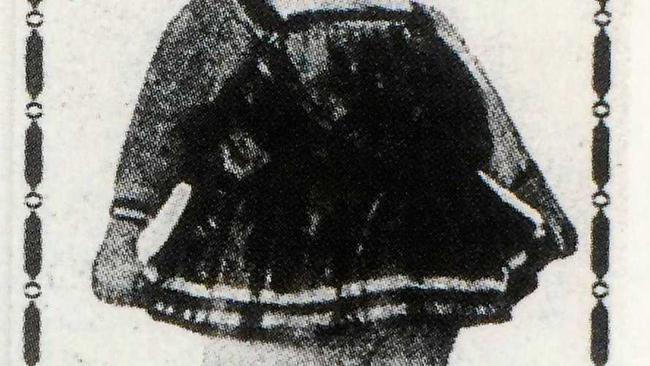
140 years ago, in its debut year, The Gympie Show as it is known today, did not make the equivalent of $150 in gate takings and had an attendance of 2000 people.
In 2005, an average of 25,000 people attended the show.
The book, All Hands To The Plow: A history of the Gympie District Show Society Inc., by Pat Towner, details the journey of the show to its current, modern day form.
The book details the early days and states the groundwork for the show.
On Saint Patrick's Day, March 17, 1877, William Kidd, mine host of Seven Mile Hotel on Brisbane Road, was involved in organising a "plough match” - a competition to see who could best plough a field.
As the gold miners flocked to Gympie, the importance of agriculture to feed the miners grew. The competition between agriculturalists then needed official representation through an association, which was formed in the same year.
The Gympie Agricultural, Mining and Pastoral Society was then formed, and from that the exhibition.
Originally held at Tuckers Paddock, near the railway station, the society then moved to the new Showground at the South Side.
The Gympie Show was once well known for the attractions, some of which have changed as society has.
"Earlier attractions included unfortunates such as "Jolly Nellie” the fat lady, a grossly obese woman weighing 56 stone
"Other such shows were of dwarfs and pygmies. These curiosities have disappeared as sensitivity has improved.”
Towner outlined the diversity of the early show parades.
"The procession to the show ground on opening day was headed by the Chinese of the community,” Towner stated.
"They fired off a fusillade of crackers and beat on gongs and drums and made a very impressive showing.
"Aboriginal members of the community also took part as did many horsemen and bands.”
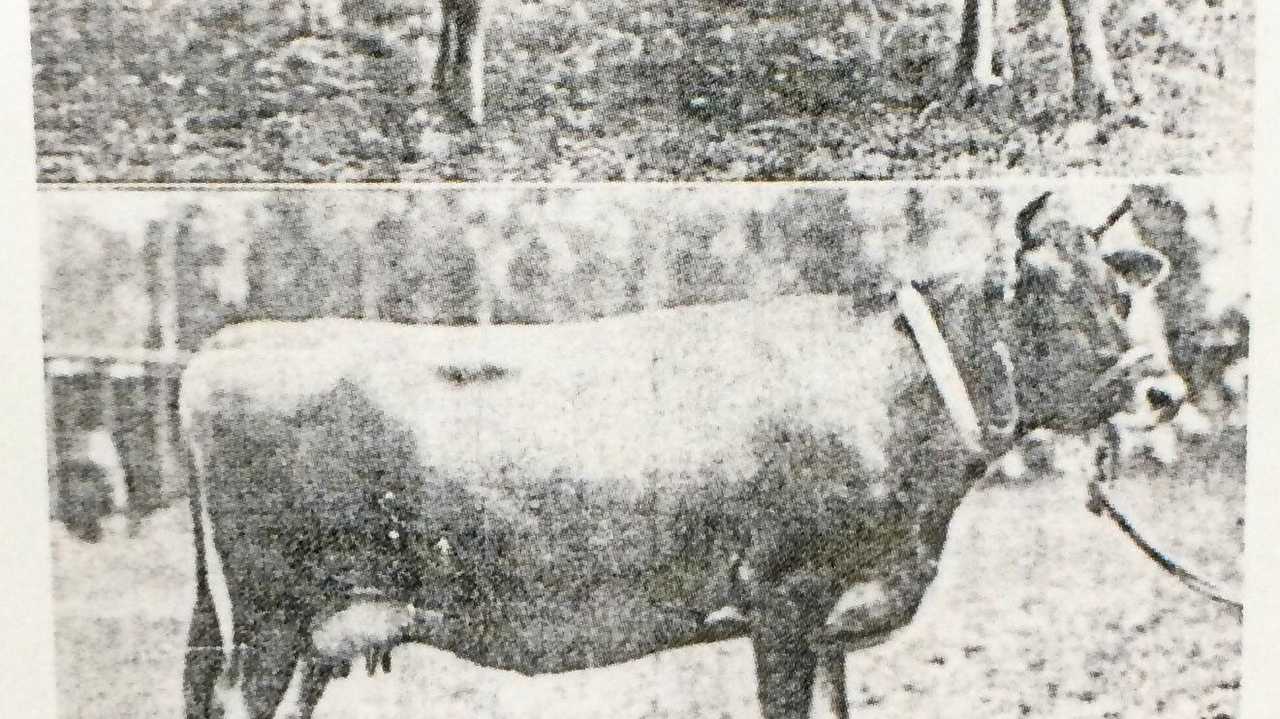
In 1890, a form of side show alley began to emerge.
"By 1890, side show alley was beginning to make an appearance and several entrepreneurs arranged their competitions for the general public in tents erected for the purpose.”
By the early 1900s Towner stated there were difficulties in maintaining the show.
"In this new decade there was a good deal of concern, as horses in the area were suffering from influenza and some had the strangles.”
The show was halted during the first world war, and again during the Depression of the 30s.
The depression, in particular, put further pressure on an failing exhibition, with the show president writing to The Gympie Times for help.
"The president, Mr J. MacDOnnell wrote to the editor of The Gympie Times begging readers for help.
"The annual show had been deteriorating for some time, entries were dwindling especially in schoolwork, most of which came from the Southside School nearby.
"The show of the previous year had made a loss of £338.”
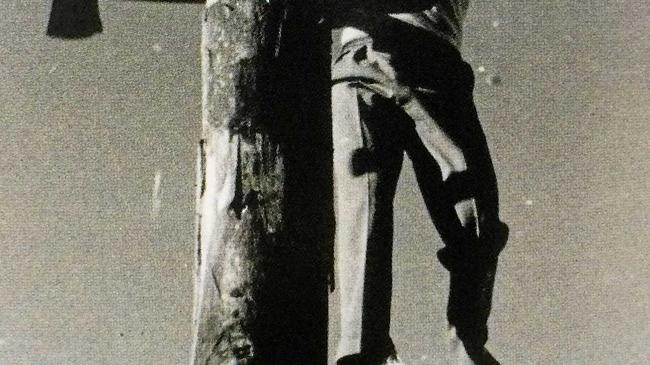
Roughly $34,000 in today's currency, adjusted for inflation.
During the second world war the showgrounds were taken over as a military barracks, which suspended the show for six years.
It was this time that Gympie legendary axeman Vic Summers was at his peak, along with his protege Max Krogh.
The 50s and 60s then saw the show truly re-emerge as a cultural attraction, through post-war abundance and growing economic stability as well as better transport, roads, and bridges across the Mary River.
Alain Henderson had also started calling the show from his customary position in the centre ring.
The 70s and 80s then saw a revitalisation and rebuilding of the showgrounds, increasing capacity and comfort of viewing, including the new grandstand.
Money began to become the key theme for the show in the 90s, with fundraising by the four 1990 Show Girl entrants totalling $43,000.
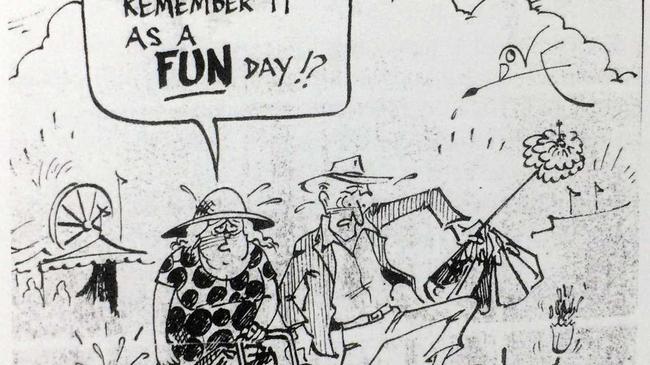
As a result the search for new revenue, as well as other factors, the show began to take on a form we see today - showbags, ferris wheels and fairy floss.
In the year 2000 the show turned 112-years-old, steel yards were built permanently on-site and Machinery Alley featured a rock climbing wall.
In "looking back”, a chapter marking 135 years of the show, Towner states how the exhibition has changed.
"It always seemed colder in May years ago and it was a case of donning overcoats and rugging up to watch the ring events at night,” Towner wrote.
"The Gympie Show brings back a lot of memories; the times when cars bogged to the axles; the shows of the 50's when it was a real family affair, parents dressed to the nines and children in new clothes.
"The dress code has slipped a little these days but many things remain the same, particularly such diverse things as the magnificent livestock and the fairy floss.
"The boxing tent no longer appears and the old-style shooting galleries are rare but the Ferris Wheel has been around for many years and just grows bigger.”

